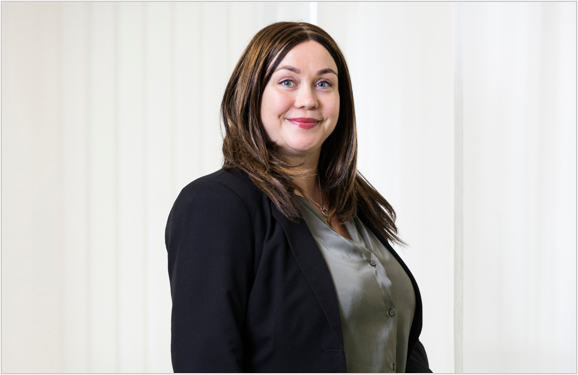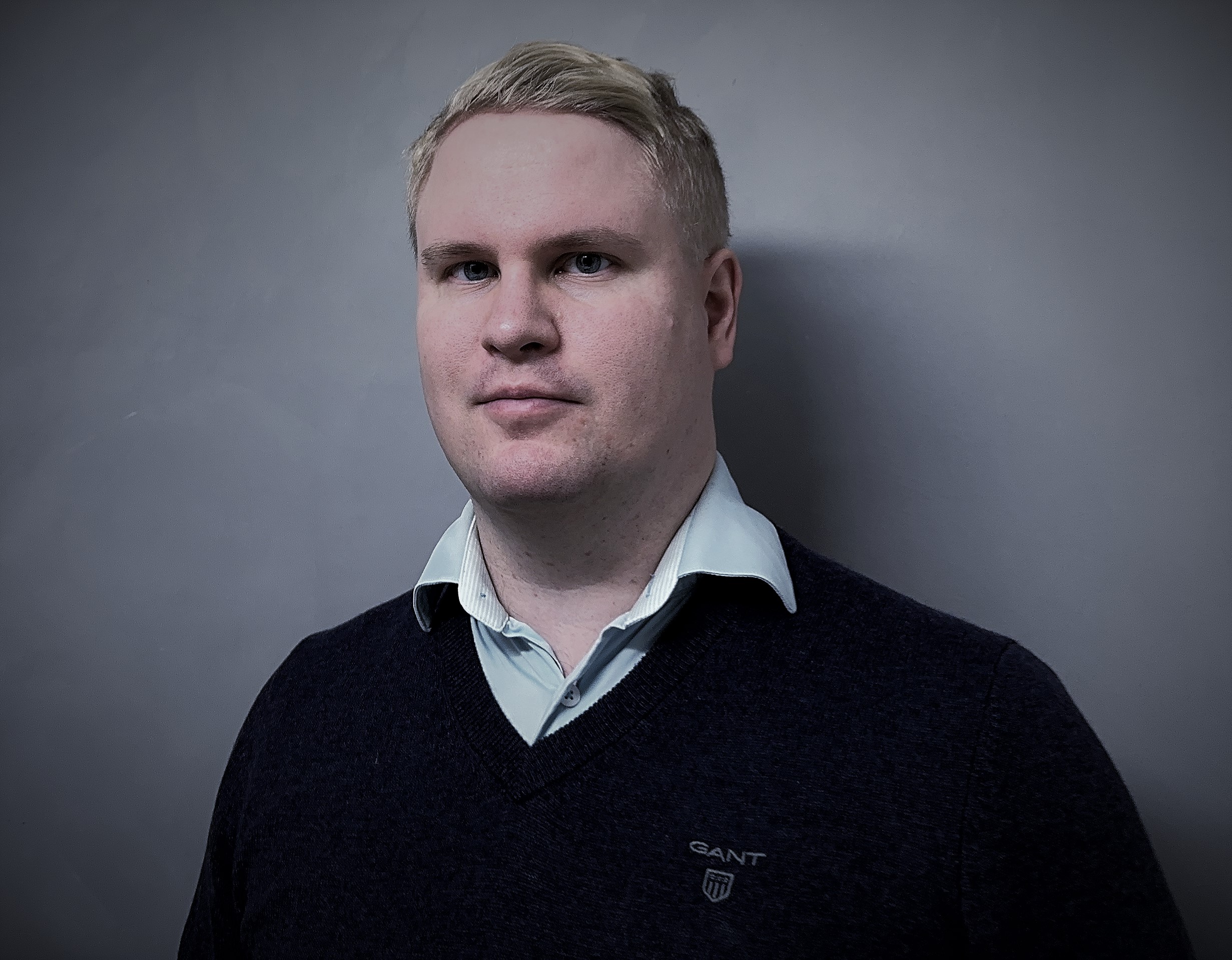Espoo is the second largest city in Finland. It’s growing rapidly at the rate of 6,500 new citizens each year, so it will be a third larger by 2045. The city is one of the largest employers in the country, with over 11,500 employees covering education, childcare, social services, city planning, infrastructure, and more. 12,000 contractor employees also work for the city, delivering goods and services.
Espoo’s strategy, called “The Espoo Story”, emphasizes collaboration and co-creation to build a city where residents, businesses, and communities work together. The Espoo Story guides daily operations and aims to make Espoo a vibrant, sustainable, and internationally connected pioneer city.
The mayor’s office acts as the city’s support function, covering areas like finance, procurement, logistics, and HR. Hanna Salmijärvi is Project Director, Financial Planning.

She leads a team responsible for the financial systems used in all departments in the city of Espoo. She said, “One of my main tasks is to ensure the systems are kept up to date to meet the ever-evolving needs of users, and to be future-proof in anticipation of needs that are not yet known. We’re proud that the city of Espoo won the Oracle Finance Innovation Award for Europe, Middle East, and Africa in 2024.”
Moving to Oracle Cloud
The award recognizes the ambitious project to replace legacy on-premises financial systems with Oracle Cloud Applications for ERP and EPM and Fusion Data Intelligence (FDI), a family of prebuilt, cloud native analytic applications for Oracle Cloud Applications. FDI blends the power of Oracle Analytics Cloud’s AI-powered capabilities, including self-service data preparation, visualization, enterprise reporting, and natural language processing, with best practice key metrics and domain expertise to help decision-makers to run their city.
Jommi Pätäri leads the finance data and analytic teams overseeing the overall Oracle Cloud Applications, with a special focus on FDI. He explains, “In support of The Espoo Story, we are innovative in every way—not least in adopting digital technology to improve our city’s operations.”

Delivery in the time of COVID
The project was delivered remotely during the COVID pandemic by the City of Espoo’s project team, their partner Attido, and Oracle experts. Salmijärvi explained, “Over 100 people were involved, with 40 process owners and key people from the user community handling the main design work. Our main go-live was in 2024 after hundreds of workshops and thousands of hours. To be successful, we needed strong collaboration and communication between teams, all working remotely.”
Salmijärvi added, “It also forced us to manage the project digitally and remotely from each other. Now we know we can work this way. We’re much more agile managing projects and collaborating with Attido. They have become very close to our business and a very important partner. Co-working nowadays is easier because we made it through those intense times during COVID. And it’s been a pleasure working with Oracle’s team, which always listens to customer feedback and is continuously improving the product.”
Moving from on-premises to cloud for the new systems was a significant improvement. Pätäri explains, “On premises, the systems had outdated security and no development roadmap. Our new cloud-based environment is updated four times a year, and we adopt new technologies much faster. For example, we have started using AI solutions that wouldn’t have been possible in the old system. We’re really riding the wave of technological progress.”
Supporting rapid growth – a management dashboard
Population changes affect tax revenue, the general economic outlook, and the growing importance of sustainability as part of financial planning. To manage their rapid growth, it’s crucial for Espoo to effectively manage their investments.
To support the users across all departments, the team created a management dashboard with all finance KPIs in one place, updated in real time, using Oracle APEX low-code development into which FDI reports are embedded. Salmijärvi said, “We no longer have to analyze data in multiple places or wait for the data to be delivered to us to get the information we need. That’s massively important for our directors and other city employees. The dashboard gives them a clear view of the city’s overall financial development, project progress, and investment tracking. It also helps them follow up on strategic goals. With this system, leadership is much more informed about what’s happening financially—and that leads to better decisions.”
With FDI, Espoo turned qualitative text-based goals into measurable indicators, giving a whole new perspective on managing the city. And having visibility of key metrics drives process change. For example, Procure to Pay processes have been improved because staff can track contract usage more effectively, which helps them make better procurement decisions. Pätäri commented, “Real-time data, easily and quickly accessible, is crucial to support decision-making. If the data is a month old, it’s not helpful. With real-time insights, they can react faster to anomalies and potential contract misuse.” Espoo increased the automation rate of purchase invoice processing by over 40%. Now, about 90% of invoices go through the system automatically, without manual or technical intervention. Processing times have also improved, and they’re able to pay suppliers on time.
Ultimately, the mayor’s office is accountable to the citizens of Espoo. Many of the financial statements, periodic reports, and most importantly the narrative reporting, are made available to citizens through portals. It helps citizens to visualize detailed economic data and know how their taxes are being spent.
With FDI you have confidence in the data
Before using FDI, the underlying data was dispersed across multiple systems. They didn’t have confidence in the accuracy of data at source. Pätäri said, “Now, because FDI is directly connected to the data in our systems of record—Fusion Applications—and Oracle is maintaining the data pipelines, we have confidence in the quality of the data: it’s clean, accurate, reliable, and real-time. The data is organized into subject areas, so it’s much easier to create new reports—blending data from purchasing, invoicing, general ledger, budgets, and forecasts—to give our users insight. FDI also helps us identify data quality and process issues by quickly spotting anomalies. For example, incorrect purchase invoices are much easier to detect with the help of analytics.”
Self-service analytics
Some users are curious and confident exploring data to find insights. They have become very adept and self-sufficient using the ad-hoc capabilities in FDI. Salmijärvi commented, “The dashboards are very visual; it’s easy to assimilate information in just a few seconds to know what’s happening. You don’t have to be a specialist to understand. Over time, we anticipate that more and more users will become adept at changing visualizations, or creating filters for themselves, or even blending data to create new reports to meet an ad-hoc need.”
Pätäri said, “Most of the time the financial dashboards meet the needs of our users. But when a new requirement arises, we can fulfill it ourselves —we don’t rely on a specialist partner to do it for us. It’s much faster—what used to take our partner two weeks on the old systems is now completed by us in minutes.”
FDI gives the finance department the capability to be a better business partner by doing ad-hoc analysis projects. For example, tracking and forecasting tax revenue and monitoring income versus costs. Salmijärvi said, “We need to keep a close eye on costs to understand profitability. It doesn’t make sense to offer services that cost more to produce than the value they bring.”
The system has also been extended beyond core systems. For example, Espoo blends Oracle Fusion ERP and EPM data in FDI, along with data from the property and rental management systems, providing a comprehensive overview of all the buildings they manage and their status. Salmijärvi commented, “It’s a very rich and comprehensive data set. We’ve built a solid model for managing integrations which are planned, built, and tested collaboratively with users. We’re expecting to add more data and extract even more insights from this data in the future. Not only does this improve efficiency, but it also improves services for citizens.”
How to get the best from the new systems
Helping employees to get the most from the new systems was quite an undertaking. Salmijärvi explained, “We ran an education project to show how to use them. It was a significant effort, involving 11,500 people employed by the city. Every day we ran clinics attended by up to 200 people, giving them the opportunity to ask ‘how-to’ questions of our experts. We also made online tutorials with Oracle Guided Learning. We continue to have regular dialogue with stakeholders and are always open to their ideas and suggestions.”
What of the future?
Salmijärvi commented, “Our near-term objective is to move systems to the Oracle EU Sovereign Cloud. After that, we want to focus on blending our finance data from Fusion ERP and EPM into our sustainability initiative.” Sustainability is a major theme in The Espoo Story, with a stated aim for the city to be carbon neutral by 2030 through determined cooperation with businesses, universities, other communities, and residents.

Pätäri added, “AI is the game changer. We will have to think differently about how we develop our solutions to take advantage of AI. In the past, the cost of maintaining overlapping semantic models and data pipelines has limited the scope for AI, since all data was not in one place. With FDI, it be much simpler and cheaper to manage.
We think AI will help us with natural language querying and automatically adding narrative to FDI reports to help users interpret the information. It can give information directly to executives on demand, where in the past, they would have to seek help from finance controllers. AI will become our digital partner—someone you can ask for insights and analysis on the fly.”
Learn more about the City of Espoo and FDI, and you can always ask questions in the Oracle Analytics Community.

